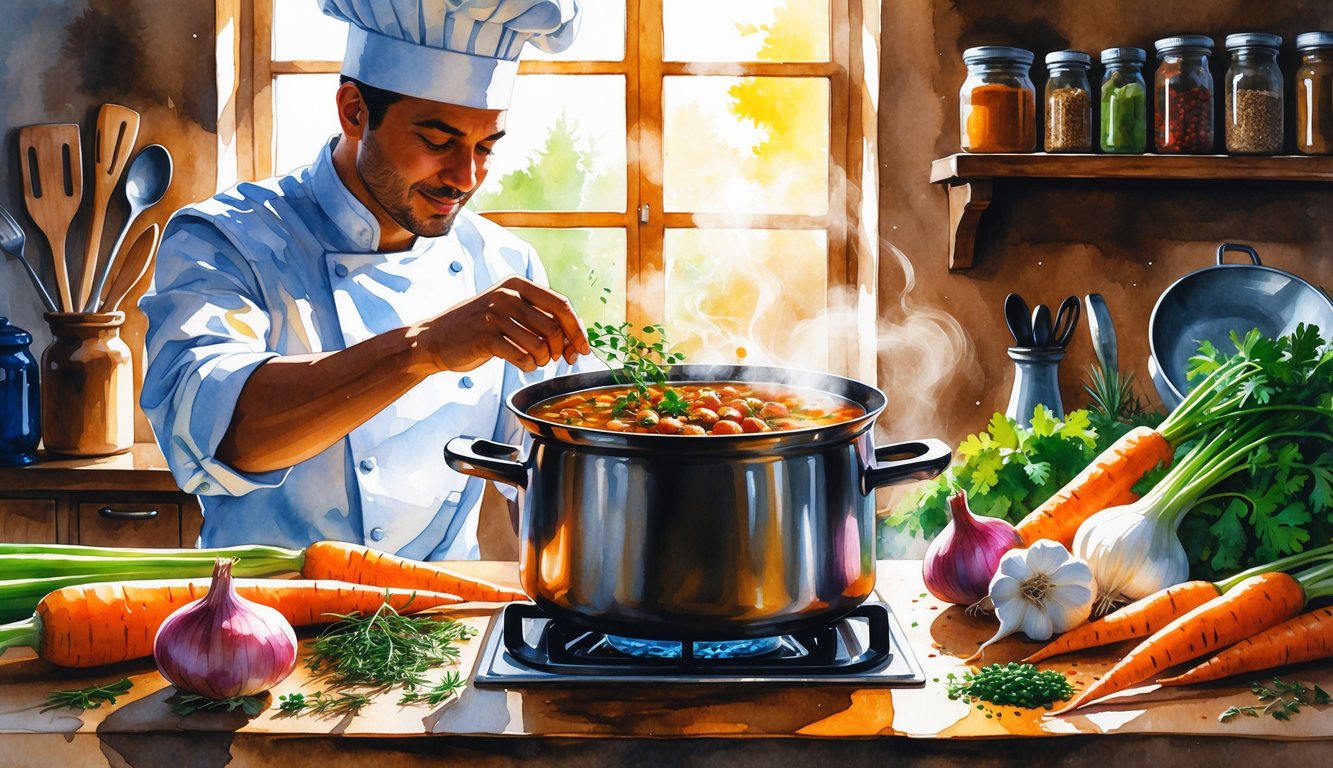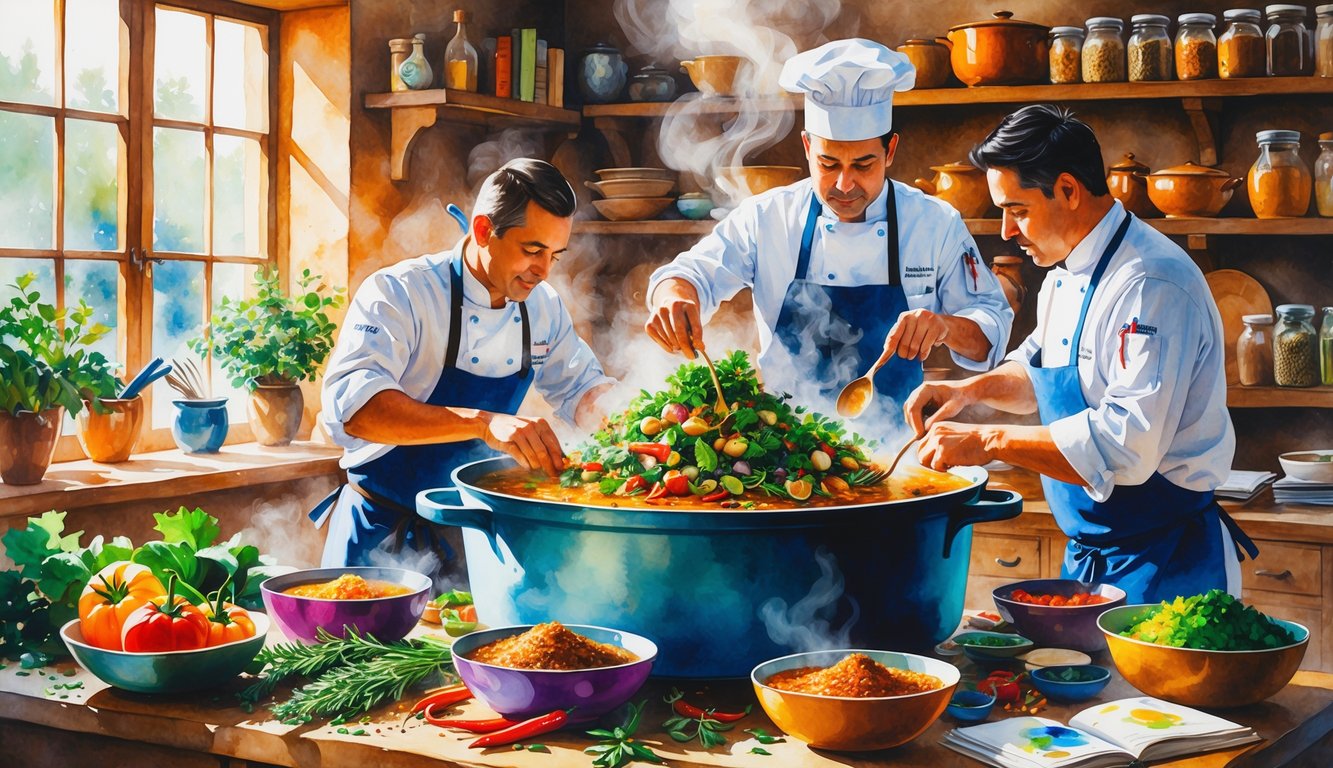
Grabbed some random stew recipe last week—looked promising, right? Nope. All I got was a salt bomb and a vague sense of regret. So, what are these so-called “top chefs” doing that actually works? I’ve been poking around and, honestly, the answer’s almost annoyingly basic: tomato paste. That’s it. You cook it in at the right moment and, suddenly, your beef stew goes from “meh, it’s food” to “wait, is this actually good?” Apparently, every pro on earth is obsessed with this step. I’m not even joking—check “a few tablespoons” and you’ll see the hype.
You’d think the rest is, I dunno, truffle oil or gold leaf. Nope. Ivan Beacco (dude’s Italian, sharp knives, intimidating energy) says it’s mostly about technique. Sear the beef. Use short ribs, not whatever’s been in the freezer since last summer. Suddenly, your stew stops being sad and starts feeling like you paid for it. I’ve tried skipping the searing step—every time, I end up with beef soup. Not stew. Soup. Total letdown.
And if you’re about to go down the “stew upgrades” rabbit hole, just know: timing is everything. Dump stuff in whenever? Disaster. Stew is petty and will punish you for being lazy. Order matters, patience helps, and, honestly, a $2 tube of tomato paste will outdo any overpriced “umami powder” nonsense. Why don’t those viral lists ever mention that?
Choosing the Best Cuts of Meat
Ever buy “stew meat” from the grocery store? It’s like a lucky dip—random chunks, zero consistency, and you have no idea what you’re getting. Why is this acceptable? Picking the right cut isn’t some chef’s secret society thing. It’s why restaurant stew tastes like food and mine sometimes tastes like sadness.
Understanding Collagen and Connective Tissue
Collagen. Ugh. I’ve ruined so many stews by rushing this part. Cheap cuts like chuck roast, brisket, short ribs—these are tough at first, and if you try to cheat, they stay chewy forever. Pros at Chef’s Resource keep saying: let it simmer for hours, let the collagen break down, and you’ll get that thick, almost jiggly stew texture. I’ve tried using fancy steak cuts—total waste. They dry out and taste weird. If you’re still confused about collagen, poke the meat after two hours. If it’s tough, keep going. It’ll get there. Unlike my uncle, who never changes his mind about anything.
Selecting Between Chuck, Brisket, and Short Ribs
If there’s a debate here, it’s about which cut to use. I default to chuck roast. Cheap, shreds nicely, tastes like beef. People at The Cooking Facts agree. Brisket’s heavier, fattier—kind of French bistro vibes—but it dries out if you forget about it (ask me how I know). Short ribs? Fancy, but sometimes you’re left fishing for bone bits and feeling awkward. My friend swears by a mix: some chuck, a bit of brisket, maybe a short rib or two. No two stews taste the same, which is fine, unless you’re cooking for someone who expects consistency.
Trim and Preparation Tips
Trimming fat? I left all the fat on once. Huge mistake. My stew felt like beef-flavored chapstick. Now I trim the big chunks, leave some thin bits for flavor. Also, cut the meat into big cubes—like, bigger than you think. Small cubes dry out and disappear. I always crowd the pan when browning and regret it. Give the meat room. Crust is everything, and butchers plus Carnivore Society swear by it. If you get weird-shaped pieces, just try to make them similar sizes. Nobody cares if they’re pretty.
Oh, and dry the meat before browning. Not for Instagram, but for flavor. Wet meat steams, doesn’t brown. I skip this step sometimes and always regret it.
Crafting Layers of Flavor

Throwing everything in at once and hoping for magic? Never works. It’s all about timing, chaos, and letting things get a little wild under the lid. Flavor isn’t luck—it’s a bunch of tiny decisions and, honestly, covering up your mistakes.
The Maillard Reaction and Browning
Maillard reaction. I know, science class flashbacks, right? Sear the meat on high heat. People always say “color equals flavor,” but have you ever had a sous chef yell at you for crowding the pan? Everything steams, nothing browns, and then you’re just apologizing to your dinner. Browning creates all those deep, savory flavors. It’s a chemical thing—amino acids, sugars, blah blah, but mostly, it just tastes good. Don’t skip it. Don’t ignore the brown bits at the bottom (the fond!). That’s gold, not mess.
I always pat my meat dry, blast the heat, and try not to touch anything until it wants to move. Chefs get weirdly intense about this. Flavor layering starts with those brown bits. Don’t believe me? Try skipping it. You’ll see.
Deglazing Techniques With Wine and Vinegar
I burn the fond on purpose. There, I said it. A splash of wine or vinegar, scrape like you mean it, and suddenly you’ve got the base of a real stew. Wine adds depth, vinegar brings sharpness. Some nights I use both because I can’t make decisions. When you pour it in, it sizzles and smells like you actually know what you’re doing. Chef Sylvie Terrell (six James Beard nominations, no big deal) does wine first, then vinegar.
Sequence matters. Wine early, acid late. Why? I don’t know, but it works. Also, cleanup is easier, so there’s that.
Creating a Flavorful Reduction
After all that, you’d think you’re done, right? Nope. Reducing the stew—boiling off some liquid with the lid off—makes a huge difference. Suddenly it’s not watery soup, it’s actually stew. I’ve overdone it and ended up with beef paste, but usually, it’s worth the risk. Jacques Pépin says patience, but I just learned from burning stuff.
Don’t skip this. Finishing with a reduced sauce makes people think you used a secret ingredient. The only secret is not leaving the kitchen to fold laundry.



